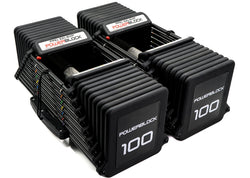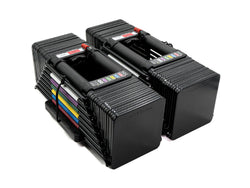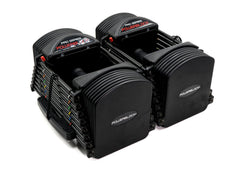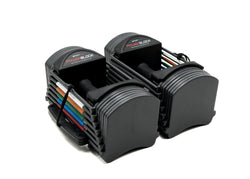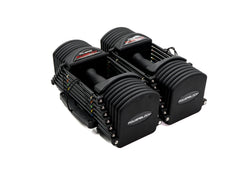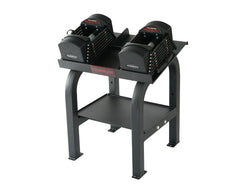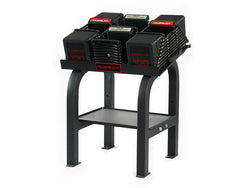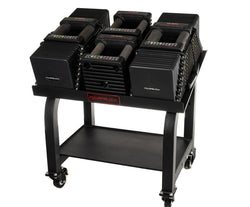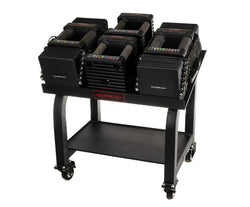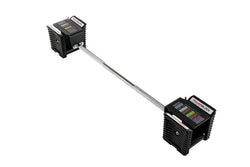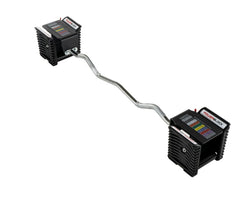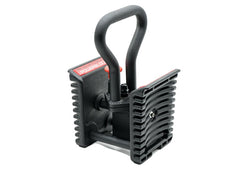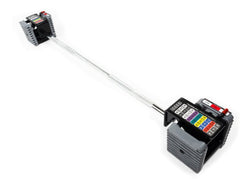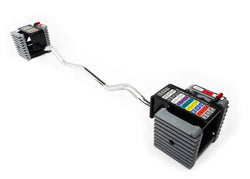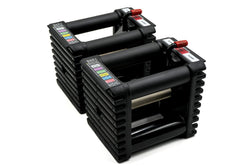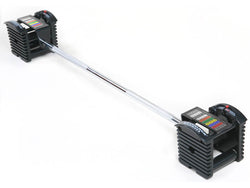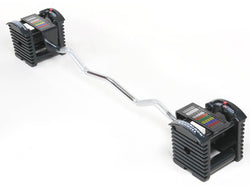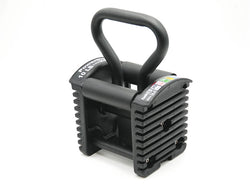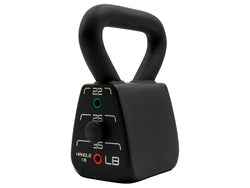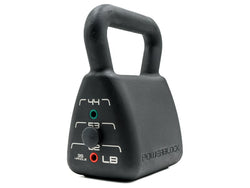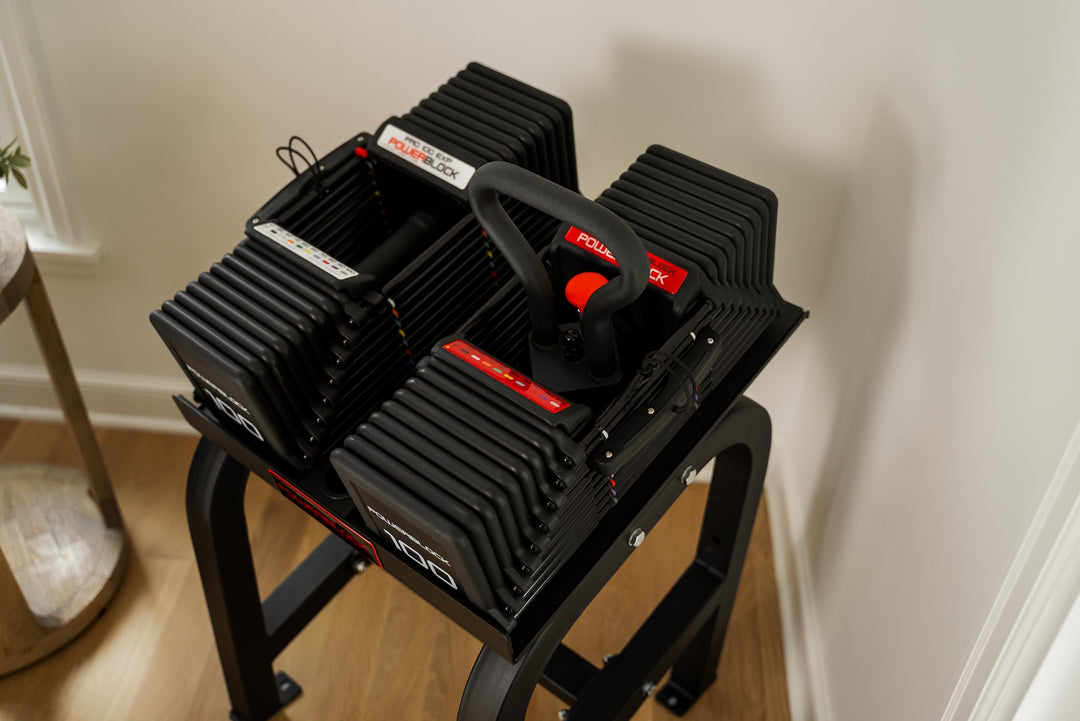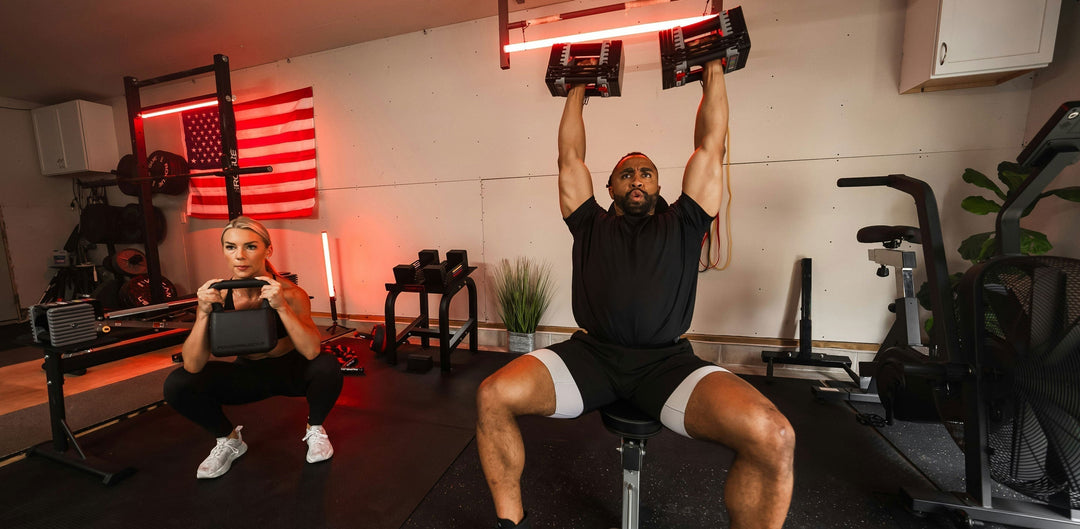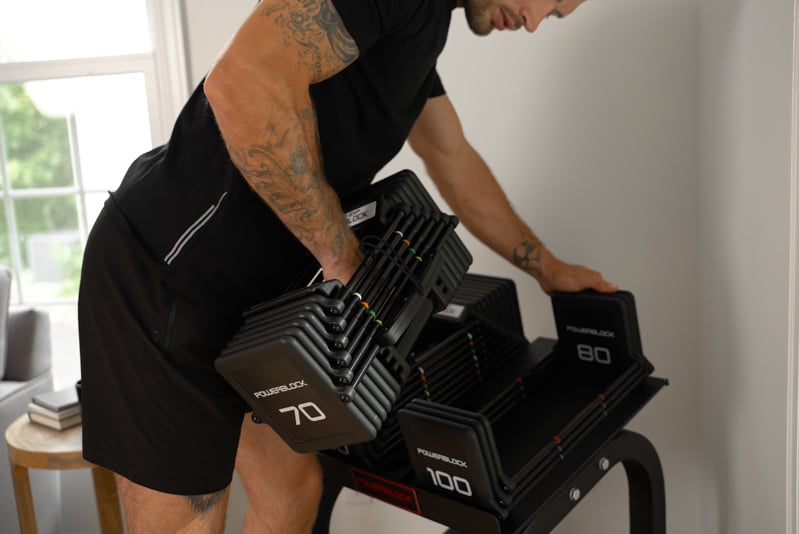As we age, movement can become increasingly difficult. However, it doesn’t have to be that way. Strength training at and over 50 can be safe and can improve the quality of life by strengthening joints, improving mobility & stability, increasing metabolism, and building bone strength.
Form Over Ego
When starting to strength train, or even if you’re getting back into strength training, it’s essential to leave your ego at the door and assess your strength, starting with light to moderate weights.

Assess Your Strength Levels
When assessing your strength levels, it’s important to start light, not where you were 10 or more years ago when you were regularly strength training. Follow these 3 simple steps:
-
Estimate Your One-Rep Max (Safely)
Why it matters: Your “one-rep max” (or 1RM) is the most weight you can lift one time. However, testing it directly can be risky as you age. Luckily, you can estimate it safely.
-
How to do it:
-
Pick a major lift — like a squat, bench press, or deadlift.
-
Choose a weight you can lift 5–10 times with good form.
-
Plug it into this formula: Weight × (1 + 0.0333 × reps) = Estimated 1RM
Example: If you bench 100 pounds for 8 reps: 100 × (1 + 0.0333 × 8) = 127 pounds estimated 1RM.
Tip: Recheck every 6–8 weeks. If your estimated max goes up, your strength is improving.
-
Count Reps to Fatigue
Why it matters: This shows how much your muscle endurance (and strength tolerance) is improving — both important for staying active and injury-free.
-
How to do it:
-
Select a common exercise, such as dumbbell presses or goblet squats.
-
Use the same weight each time (for example, 20-lb dumbbells).
-
Do as many controlled reps as you can until your form starts to fade.
Tip: If you can do a few more reps with the same weight as last month, you’re stronger, even if the weight hasn’t changed.
-
Track Strength Compared to Body Weight
Why it matters: Your strength means more when you compare it to your body weight — it’s a great way to measure real-world fitness.
How to do it: Divide your best lift (or estimated 1RM) by your body weight.
Example: If you deadlift 150 lbs and weigh 150 lbs, your score is 1.0 — meaning you can lift your body weight.
General goals for adults 50+:
-
Squat: 0.8–1.2× your body weight
-
Bench press: 0.6–1.0×
-
Deadlift: 1.0–1.5×
Using Light to Moderate Weight to Start
Starting with Light to Moderate weight at any age allows your body to acclimate to the new stress of weight training. This will help limit your soreness and enable you to progress more quickly in your strength training journey. As mentioned above, finding the right weight is important. With just a little work, you’ll be able to lift the appropriate weight for you.

Best Lower Body Dumbbell Movements
When it comes to the lower body, there are a lot of movements we can perform with dumbbells alone. However, there are 3 staple movements that all lifters, despite experience levels, can perform with a set of Adjustable Dumbbells.
The Goblet Squat
The Goblet Squat is a phenomenal lower-body exercise because it engages the quads, glutes, and abs while allowing the one performing it to keep strict form, and promotes smaller muscle groups that promote balance. Here’s how to perform it:
-
Hold the Weight the Right Way
-
Grab a dumbbell or kettlebell and hold it close to your chest.
-
Keep your elbows pointed down and your hands under the weight, like you’re holding a big cup (that’s why it’s called a “goblet” squat).
-
Stand with your feet a little wider than shoulder-width apart and toes slightly turned out.
Tip: Keep your chest tall and your core tight before you start moving.
-
Lower Into the Squat
-
Push your hips back first — like you’re sitting into a chair.
-
Bend your knees and lower yourself down until your thighs are at least parallel to the floor (or as low as feels comfortable).
-
Keep the weight close to your chest and your heels flat on the ground.
Tip: Don’t let your knees cave in — they should point in the same direction as your toes.
-
Stand Back Up Strong
-
Push through your heels to stand tall again.
-
Squeeze your glutes (butt muscles) at the top.
-
Keep your chest up and avoid leaning forward.
Tip: Move slowly and with control — quality matters more than speed.

The Stiff Legged Deadlift
The Stiff Legged Deadlift is the next movement on our list. This movement trains the glutes, hamstrings, lower back, and core muscles. Similar to the goblet squat, it also helps the muscle groups that help us balance.
-
Set Up Your Stance
-
Stand tall with your feet about hip-width apart.
-
Hold a pair of dumbbells (or a barbell) in front of your thighs, palms facing your legs.
-
Keep a slight bend in your knees — not locked straight, but firm.
-
Pull your shoulders back and tighten your core.
Tip: Think “tall and strong,” not stiff — your back should stay straight, not rounded.
-
Step 2: Lower the Weight with Control
-
Slowly push your hips back behind you, keeping the dumbbells close to your legs.
-
Lower the weight until you feel a gentle stretch in your hamstrings (usually when the dumbbells reach mid-shin level).
-
Keep your chest up and your spine neutral — don’t let your back round.
Tip: The movement comes from your hips, not your knees or lower back.
-
Step 3: Lift Back Up
-
Press your hips forward and stand tall again, squeezing your glutes at the top.
-
Keep the weight close to your body throughout the motion.
-
Pause briefly at the top before starting the next rep.
Tip: Move slowly; a controlled tempo helps maintain tension in your muscles and protects your back.

Glute Bridges
Our final lower body movement is Glute Bridges. The movement is great for isolating the glutes, but also helps stabilize the hips for improved balance, similar to our other exercises.
-
Get into Position
-
Lie on your back with your knees bent and feet flat on the floor, about hip-width apart.
-
Keep your arms relaxed at your sides with palms down.
-
Draw your belly button toward your spine to engage your core.
Tip: Keep your head and shoulders relaxed on the floor.
-
Lift Your Hips
-
Press through your heels and squeeze your glutes to lift your hips toward the ceiling.
-
Your body should form a straight line from your shoulders to your knees at the top.
-
Avoid arching your lower back — the movement should come from your glutes and hips.
Tip: Imagine trying to “push the floor away” with your heels.
-
Lower with Control
-
Slowly lower your hips back down to the floor without dropping them.
-
Keep your core engaged throughout the movement.
-
Reset and repeat for the next rep.
Tip: Move slowly and focus on the squeeze at the top — quality over quantity.

The Best Upper Body Dumbbell Movements
Similar to our lower body movements, numerous upper body movements can be performed. However, these three can be done by anyone at any experience level, all with just a set of Adjustable Dumbbells.
Seated Overhead Press (with back support)
The Seated Overhead Press is an excellent exercise to target the shoulders, upper chest, and triceps. This movement becomes more stable when performed seated on a bench with back support.
-
Get Set Up
-
Sit on a sturdy bench with back support and feet flat on the floor.
-
Hold a dumbbell in each hand at shoulder height, palms facing forward.
-
Engage your core and keep your back pressed against the bench.
Tip: Keep your shoulders down and back before you press.
-
Press Up
-
Push the dumbbells straight up until your arms are fully extended above your head.
-
Avoid locking your elbows out completely — keep a slight bend.
-
Keep your core tight and back against the bench.
Tip: Don’t arch your back; focus on controlled movement.
-
Lower with Control
-
Slowly lower the dumbbells back to shoulder height.
-
Maintain tension in your shoulders and arms.
-
Repeat for your desired number of reps.

Neutral Grip Chest Press
This variation of the chest press targets your chest, shoulders, and triceps, while being easier on the shoulders thanks to the neutral grip (palms facing each other).
-
Get Set Up
-
Lie back on a flat bench or a supported bench.
-
Hold a dumbbell in each hand with palms facing each other.
-
Keep your feet flat on the floor and core engaged.
Tip: Make sure your shoulders stay down and back on the bench.
-
Press the Dumbbells
-
Push the dumbbells straight up until your arms are nearly fully extended.
-
Keep your wrists neutral (palms facing each other).
-
Avoid letting the dumbbells drift too far apart or backward.
Tip: Move in a slow, controlled motion to protect your shoulders.
-
Lower Slowly
-
Bring the dumbbells back down toward your chest in a controlled manner.
-
Stop when your elbows reach about a 90-degree angle.
-
Repeat for the desired number of reps.

Dumbbell Row (Elbows Close Variation)
Dumbbell rows target your upper back, lats, and biceps. Keeping elbows close reduces shoulder strain and increases back activation.
-
Get Set Up
-
Hold a dumbbell in one hand.
-
Place the opposite knee and hand on a bench for support.
-
Keep your back straight and core engaged.
Tip: Your head should stay in line with your spine.
-
Row the Dumbbell
-
Pull the dumbbell toward your waist, keeping your elbow close to your body.
-
Squeeze your shoulder blades at the top of the movement.
-
Avoid twisting your torso or using momentum.
Tip: Focus on moving the weight with your back and arms, not your shoulders.
-
Lower Slowly
-
Lower the dumbbell in a controlled motion until your arm is straight.
-
Keep your back stable throughout.
-
Complete the desired number of reps and switch sides.

Core & Stability Builders
Now that we've covered what your lower and upper body workouts could look like, it’s time to cover a workout for your core and stability. Building a strong core will help you move better and allow you to move more weight in your other workouts.
Dumbbell Dead Bugs
The dumbbell dead bug is a great move for building core strength and stability without straining your lower back. It teaches your abs to stay tight while your arms and legs move — an important skill for posture and balance.
-
Get Into Position
-
Lie on your back with your knees bent at 90° and feet off the floor.
-
Hold a light dumbbell in each hand, arms straight above your chest.
-
Engage your core by pressing your lower back gently into the floor.
Tip: Keep your head relaxed and eyes toward the ceiling.
-
Lower Opposite Arm and Leg
-
Slowly lower your right arm and left leg toward the floor at the same time.
-
Stop just before they touch the ground.
-
Keep your core tight and back flat against the floor.
Tip: Move slowly — control is more important than speed.
-
Return and Switch Sides
-
Bring your arm and leg back to the starting position.
-
Repeat on the other side.
-
Alternate for all reps, keeping your breathing steady.
Seated Russian Twists (Light Weight)
The seated Russian twist builds core rotation strength and improves balance. Using a light dumbbell helps strengthen your abs and obliques safely.
-
Set Up
-
Sit on the floor with your knees bent and feet flat.
-
Hold a light dumbbell close to your chest with both hands.
-
Lean back slightly to engage your core — keep your back straight, not rounded.
Tip: If balance is hard, keep your heels on the floor.
-
Twist to One Side
-
Rotate your torso to the right, bringing the dumbbell beside your hip.
-
Keep your arms close to your body — your movement should come from your core, not your arms.
Tip: Exhale as you twist.
-
Return and Twist to the Other Side
-
Bring the dumbbell back to the center, then twist to the left side.
-
Keep alternating sides in a slow, steady rhythm.

Farmer’s Carry (Grip + Balance Training)
The farmer’s carry strengthens your grip, core, and posture, while improving balance and coordination — all vital for daily activities as we age.
-
Get Ready
-
Stand tall with a dumbbell in each hand, arms down at your sides.
-
Keep your chest up, shoulders back, and core tight.
-
Choose a weight that feels challenging but allows good posture.
Tip: Look straight ahead, not at the floor.
-
Walk with Control
-
Take slow, steady steps forward while keeping your body tall.
-
Avoid leaning or swinging the weights.
-
Breathe evenly as you walk.
Tip: Imagine balancing a glass of water on your head — stay upright and steady.
-
Pause and Return
-
Walk for a set distance (like 30–40 feet) or time (20–30 seconds).
-
Turn carefully, then walk back to your starting point.
-
Rest briefly between rounds.
Lifting for Mobility
Strength training isn’t just about power; it’s also about moving well. As we age, keeping our joints flexible and muscles balanced becomes just as important as getting stronger. Here’s how to do it.
Move Through Full range of Motion
Moving through full range of motion not only strengthens your muscles, but it also strengthens connective tissue. Getting deep into a squat, meaning a full knee bend, hamstrings to calves, and torso to quads, allows the muscles to get fully engaged and for connective tissue to be fully stretched. This, in turn, will make your muscles fuller and stronger. To top it off, your balance will improve.
Add light Dumbbell Halos and Windmills
Both the dumbbell halo and windmills are great movements for joint health and mobility, but also for balance. These can also be used as warm-ups before your workout.
Dumbbell Halos
The dumbbell halo builds shoulder strength and mobility while training your core to stay stable. It’s great for warming up your upper body or improving posture.
-
Get into Position
-
Stand tall with your feet shoulder-width apart.
-
Hold one dumbbell vertically by the handles in front of your chest (like you’re holding a goblet).
-
Keep your core tight and shoulders relaxed.
Tip: Focus on smooth, controlled movement — not speed.
-
Circle the Dumbbell Around Your Head
-
Slowly move the dumbbell around your head in a circular motion.
-
Keep it close to your neck and ears, not out wide.
-
Move only your arms and shoulders — your head and torso stay still.
Tip: Breathe steadily and avoid shrugging your shoulders.
-
Switch Directions
-
After 5–8 circles in one direction, pause, then reverse the movement.
-
Keep the same slow, even pace in both directions.
Dumbbell Windmills
The dumbbell windmill strengthens your shoulders, core, and hips, while improving balance and flexibility. It’s especially good for building stability throughout your entire body.
-
Set Up the Position
-
Stand with your feet slightly wider than shoulder-width.
-
Hold one dumbbell overhead with your right arm, and let your left arm rest along your side.
-
Turn your toes slightly toward the side of the lowered arm (to the left if the dumbbell is in your right hand).
Tip: Keep your eyes on the dumbbell the whole time for better control.
-
Lower into the Stretch
-
Slowly push your hips back toward the side, holding the dumbbell.
-
Slide your lower hand (the empty one) down your leg toward your ankle or the floor.
-
Keep the dumbbell directly above your shoulder the whole time.
Tip: Go only as low as you can while keeping your back straight and your arm vertical.
-
Return to Standing
-
Squeeze your glutes and press through your feet to return to standing tall.
-
Keep your arm locked out overhead the entire time.
-
Repeat all reps on one side, then switch arms.
Pair Strength Training with Simple Stretching
Stretching allows us to take muscles that we’ve spent time shortening, flexing and lengthen them. Not only improving recovery time, but also improving our flexibility and mobility. In turn, allowing you to go deeper into each movement you perform. For a full list of stretches you can perform, check out our Top Dumbbell Exercises for Flexibility and Mobility blog.

Weekly Full Body Split
Now that we’ve covered all of our movements for the upper body, lower body, and core, it’s time for a simple split you can follow to start progressing in your strength training journey.
Lower Body
|
Movement |
Sets |
Reps |
|
Goblet Squat |
2-3 |
10-12 |
|
Romanian Deadlift |
2-3 |
10-12 |
|
Hip Thrust |
2-3 |
10-12 |
Upper body
|
Movement |
Sets |
Reps |
|
Seated Overhead Press |
2-3 |
10-12 |
|
Neutral Grip Chest Press |
2-3 |
10-12 |
|
Dumbbell Rows |
2-3 |
10-12 |
Core & Stability
|
Movement |
Sets |
Reps |
|
Dumbbell Dead Bugs |
2-3 |
10-12 (Each Side) |
|
Seated Russian Twists |
2-3 |
12-15 (Each Side) |
|
Farmer’s Carry |
2-3 Sets |
10-15 feet |
Spread these workouts throughout the week so that you complete each workout once. The days in between will be your rest days.
Rest Days
On the days you’re off and not training, it’s still important to get some form of movement in. This movement should be light and easy. For example, go for a 30-minute walk outside. Getting sunlight and fresh air can do wonders for the body. Another thing you can do is light stretching, as we talked about above. This will help with your recovery and mobility between each workout.
Consistency Over Intensity
As you go through this programming, there are going to be days when you feel stronger and days when you feel weaker; this is normal. The goal is for you to get your workouts in regularly, but not to the point where you can’t move or daily movement starts to hurt. This will help build the consistency you need to continue training and enjoying each of your workouts.
